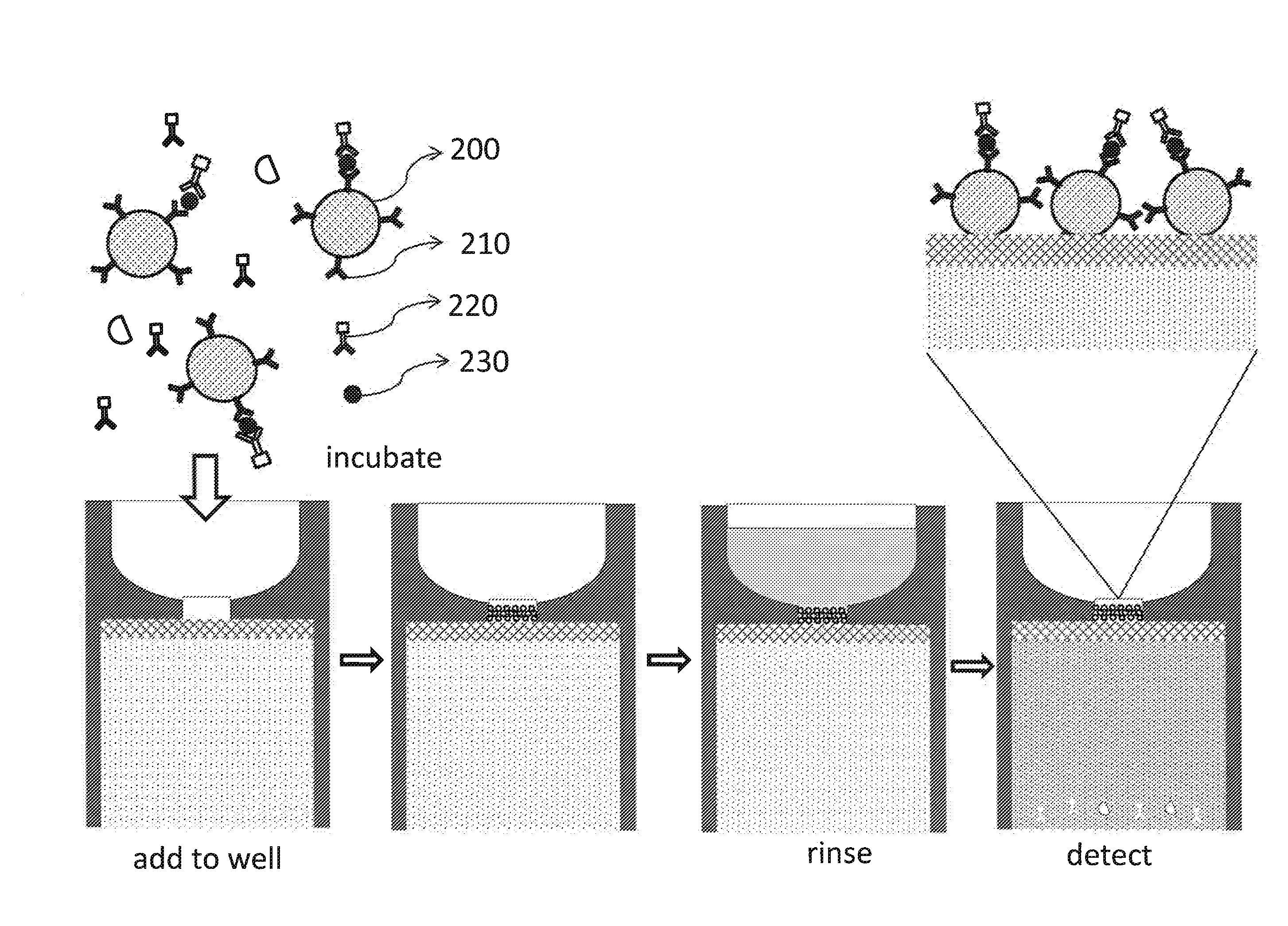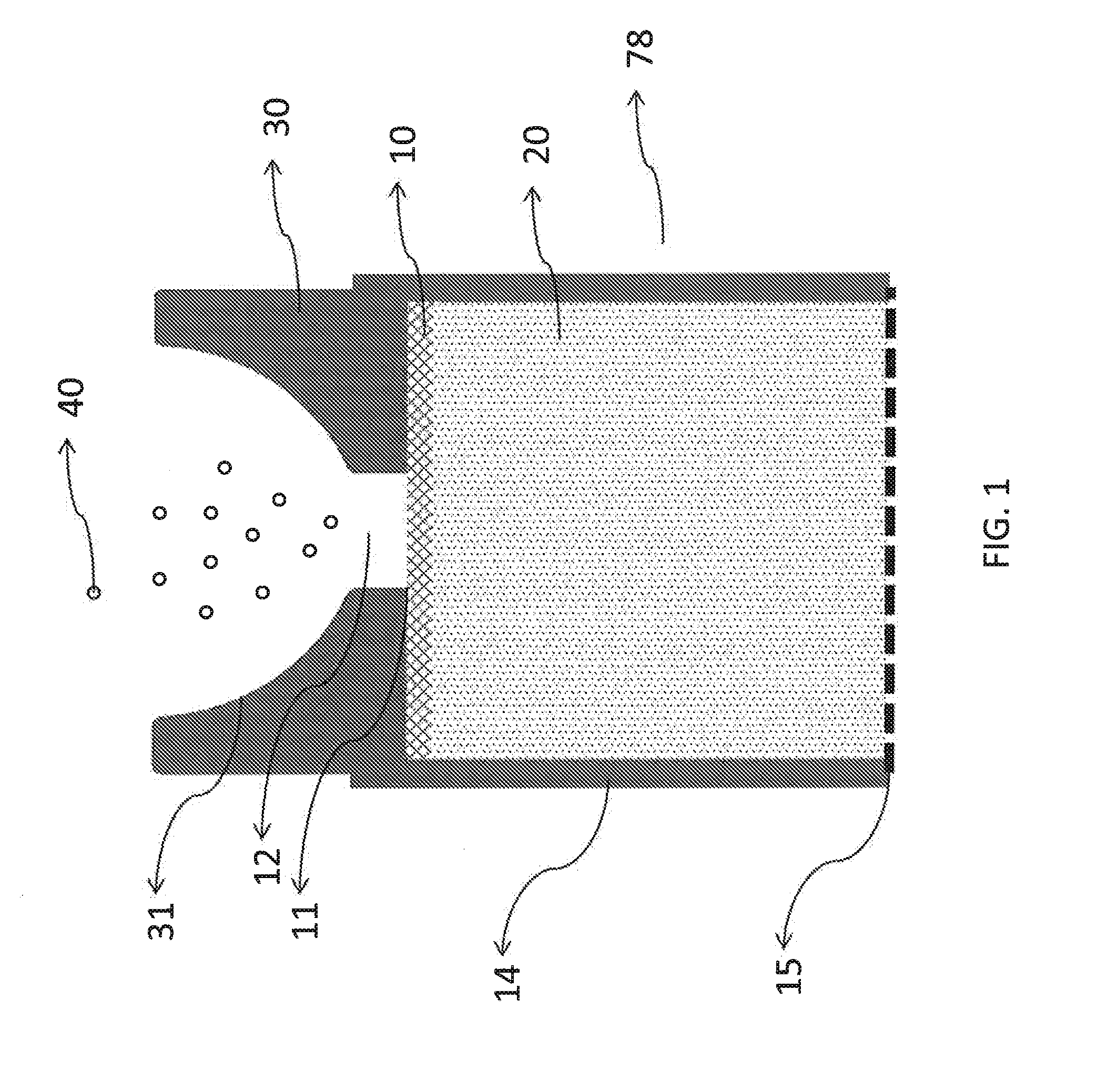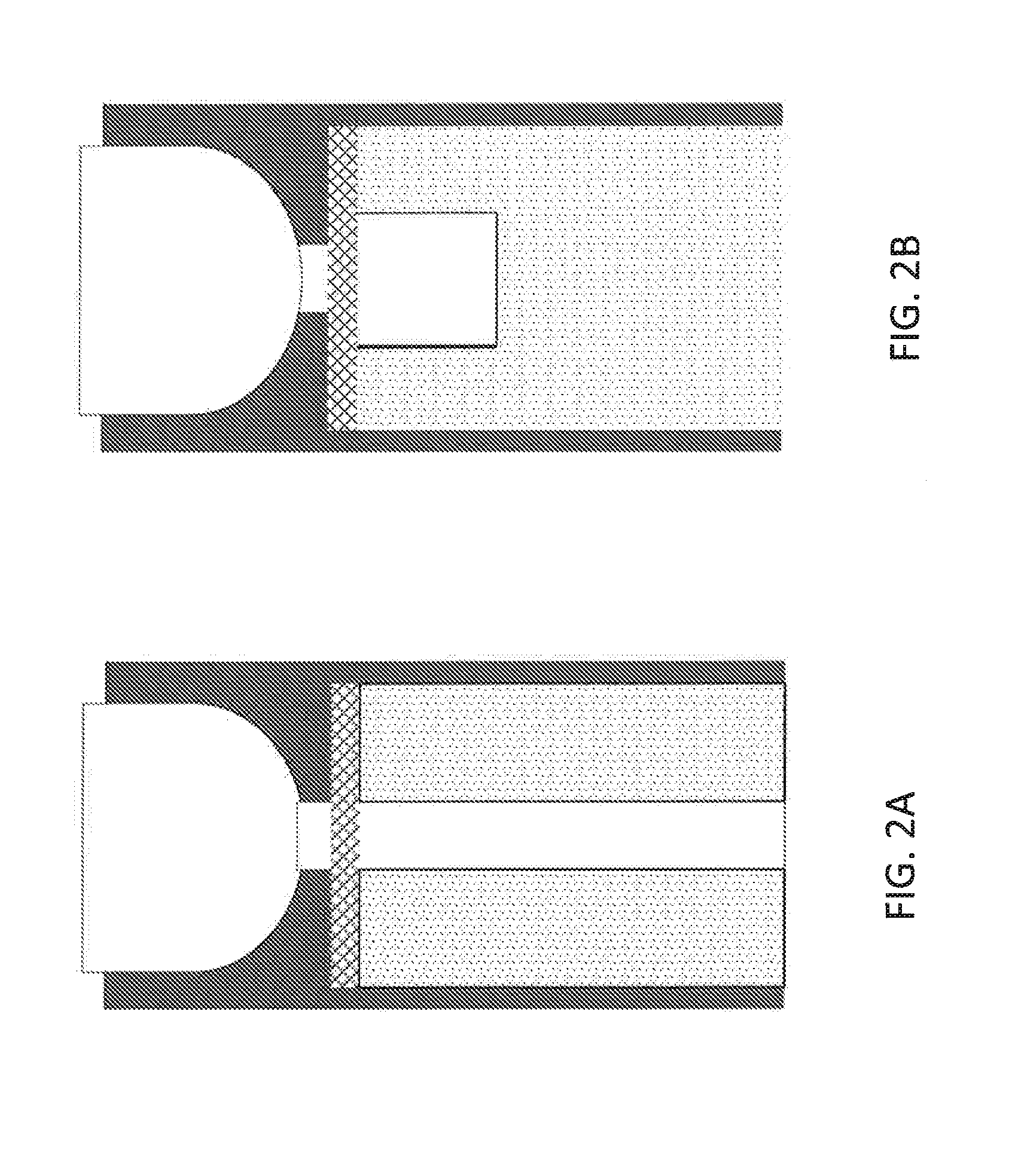Method and apparatus for biomolecule analysis
a biomolecule and apparatus technology, applied in the field of biomolecule analysis, can solve the problems of recollecting and measuring the signals of microspheres, requiring extra equipment operation, and long methods, and achieves the effects of quick and efficient collection, simplified washing step, and improved efficiency
- Summary
- Abstract
- Description
- Claims
- Application Information
AI Technical Summary
Benefits of technology
Problems solved by technology
Method used
Image
Examples
example 1
Human Alpha-Fetoprotein (AFP) Fluorescence Immunoassay
[0054]This example shows how a device described in this invention can be used for a rapid silica bead-based fluorescent immunoassay to detect AFP from human serum sample. The process can be better understood with reference to FIG. 6.
[0055]The assay will need the following reagents: (1) silica beads 200 functionalized with AFP capture antibody 210; (2) fluorescently-labeled AFP detection antibody 220; (3) serum sample containing the target AFP molecule 230; and (4) rinsing buffer.
[0056]The capture antibody, mouse monoclonal anti-human AFP antibody, is available from R&D Systems. It can be covalently attached to 5 μm carboxylated silica beads through carboxyl-amine crosslinking reaction. Functionalized silica beads can be blocked with 10% bovine serum albumin (BSA) and stored at 1% solid in phosphate buffered saline (PBS) solution containing 1% BSA with 0.5% Tween-20 (1% BSA-PBST). The detection antibody, polyclonal chicken anti-AF...
example 2
Human Alpha-Fetoprotein (AFP) Chemiluminescence Immunoassay
[0059]This example shows how a device described in this invention can be used for a rapid agarose bead-based chemiluminescent immunoassay. The process can be better understood with reference to FIG. 7.
[0060]The assay will need the following reagents: (1) Agarose beads 300 functionalized with AFP capture antibody 310; (2) AFP detection antibody labeled with horse radish peroxidase (HRP-antiAFP antibody) 320; (3) serum sample that may contain the target AFP molecule 330; (4) rinsing buffer 1% BSA-PBST; and (5) HRP chemiluminescence substrate 340.
[0061]The capture antibody, such as the mouse monoclonal anti-human AFP antibody from R&D Systems can be crosslinked to 20 μm glyoxal agarose beads through glyoxal-amine chemistry. The anti-AFP agarose beads can be stored at 20% slurry 1% BSA-PBST. The detection antibody, polyclonal chicken anti-AFP antibody can be labeled with HRP using commercially available labeling kits. In some ca...
example 3
Botulinum Neurotoxin Type a (BoNT / A) Fluorescence Resonance Energy Transfer (FRET) Assay
[0064]This example shows how the device in this invention can be used to rapidly detect active BoNT / A in a large volume of serum sample using polyacrylamide beads and a FRET substrate (see FIG. 8).
[0065]The assay will need to use the following reagents: (1) Polyacrylamide beads 400 functionalized with anti-BoNT / A antibody 410; (2) serum sample that may contain the active BoNT / A molecule 420; (3) assay buffer 20 mM HEPES at pH 8.0; and (4) SNAPtide fluorogenic BoNT / A substrate 430 from EMD Millipore.
[0066]BoNT / A antibody (Santa Cruz Biotechnology) can be crosslinked to pre-activated polyacrylamide (PA) beads such as Ultralink Biosupport from Thermo Scientific. The anti-BoNT / A PA beads can be stored at 20% slurry in PBS solution containing 1% BSA with 0.5% Tween-20. 10 μl anti-BoNT / A PA beads will be added into 500 μl serum sample and incubated at 37° C. for 1 hour with slow rotation. The mixture w...
PUM
| Property | Measurement | Unit |
|---|---|---|
| height | aaaaa | aaaaa |
| height | aaaaa | aaaaa |
| volume | aaaaa | aaaaa |
Abstract
Description
Claims
Application Information
 Login to View More
Login to View More - R&D
- Intellectual Property
- Life Sciences
- Materials
- Tech Scout
- Unparalleled Data Quality
- Higher Quality Content
- 60% Fewer Hallucinations
Browse by: Latest US Patents, China's latest patents, Technical Efficacy Thesaurus, Application Domain, Technology Topic, Popular Technical Reports.
© 2025 PatSnap. All rights reserved.Legal|Privacy policy|Modern Slavery Act Transparency Statement|Sitemap|About US| Contact US: help@patsnap.com



